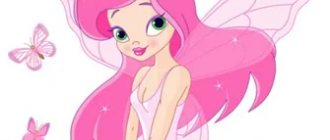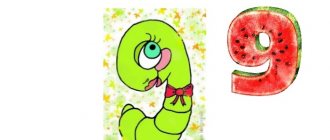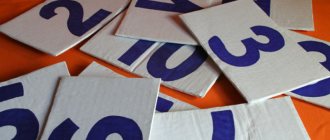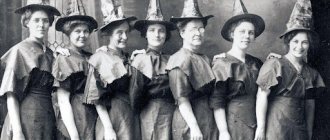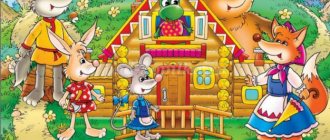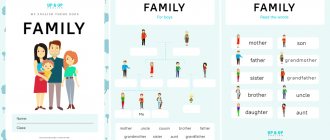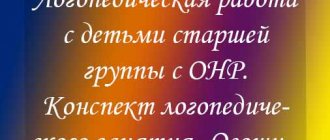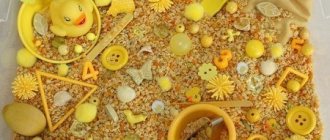You can study the number 3 in different ways. Numerous creative tasks and folklore can help with this: proverbs, sayings, riddles, poems in Russian, as well as coloring books and pictures. If you are preparing a lesson for 1st grade, a bright presentation that can be downloaded from the website will help you.
Here you can watch and download a presentation about the number and number 3.
What does the number 3 look like?
To help a preschooler or a child who goes to 1st grade remember the number 3, a question can be asked: what does it look like? To answer it, give your child clues in the form of a riddle or numbers in pictures. In folklore genres, associations are often made between numbers and objects and phenomena. For example, a three is similar to a hook, half an eight, etc. If your child still cannot draw a parallel, help him by showing him photos of various objects.
Coloring books can provide an opportunity to master numbers not only for preschoolers, but also for children attending 1st grade. It not only teaches colors and numbers, but also develops perseverance and attention. The coloring book will also help the child answer what the number 3 looks like. The coloring book, printed from our website, can be an addition to the lesson or can be used as a task for a moment of relaxation. A coloring book can have many functions. If you are unsure what to give your preschooler homework after class, coloring will help you! Also, the coloring book may contain parallel comments and tasks of a different type (count and color, collect objects and color, etc.).
Count how many bears are in the picture.
You can offer your child a book about numbers in pictures. A colorful presentation can also be helpful. It is also perfect for teachers who teach children in 1st grade. A presentation with a commentary in Russian will give the children the opportunity to build an associative series with numbers. The presentation may contain some photographs of objects and phenomena associated with the number 3.
You should also remember that there is also the Roman numeral 3. This number can also be represented in pictures.
Poem about the number three for preschoolers
***
And behind the two - look - the number three appears. Three - the third of the icons - Consists of two hooks.
***
At the edge of the forest, Where the oak trees grow, 3 squirrels hung mushrooms without drying. We decorated the clearing with garlands of honey mushrooms - Soups will be prepared in winter for the baby squirrels.
***
Three sisters chirped on the rowan tree, Three titmice did not fly away anywhere. They love to eat rowan on New Year's Day, but in the south sweet rowan does not grow.
***
Everyone only needs a three, she is very playful. Three frisky horses - the symbol of my Motherland! At school, a C is not a flirt - a very modest mark. But full of courage On the tricolor Russian flag!
***
Three is a beautiful early month Above the surface of the lake water, As if looking into a mirror, I looked at myself.
***
Where are the threes? The question is complicated! This is a chair, and a three-legged one at that. The three-legged pianos that stand in the concert hall
***
The number 3 and the letter “Z” Gemini are sisters. Bunny, Zoya and Zanozka - Repeat loudly.
***
There are three pictures on the cardboard: In one picture there is a cat, In the other picture there is a jar, And in the third picture there is a Black cat from a yellow jar, lapping and drinking milk.
***
3 - this is a snake charmer. He came out with his pipe. A snake dances in front of him - the tail is hooked, the neck is arched. Look at the snake - It’s the number three!
***
The old lady has THREE sons: The eldest was a smart kid, The middle son was this and that, The youngest was completely eccentric. The brothers sowed wheat and took it to the capital city: You know, that capital was Not far from the village.
Language learning methods
Poems, proverbs, sayings, and riddles can be an excellent help in mathematics lessons, if the teacher goes to class in 1st grade. Poems can be offered to learn to one student, who will then recite them in class. Many authors, including modern ones, have poems about the number 3. The most famous poems by S. Marshak are “Merry Counting”. These verses will also help the child build an associative series with numbers.
An interesting question will be for children who attend kindergarten or 1st grade: what does the number 3 mean? But really, does the number really mean anything?
In ancient times, people believed that the number 3 meant something magical and perfect. This is the number of ideal, perfection, shrine, not only in paganism, but also in Christianity. Remember: 3 means the Holy Trinity, and in fairy tales there are triple repetitions. Surely a child will answer such a question and say that the number 3 means a family, three wheels on a bicycle, etc. He will come from his own experience. Expand his understanding using sayings, proverbs, riddles.
Marshak's poems about numbers.
Proverbs in Russian are simply replete with mentions of this sacred number. In addition, proverbs often have an edifying meaning, and it will be useful for your child to hear them. Proverbs often represent the troika in its sacred meaning: it is the original Russian roots present in folklore that can truly raise children.
A selection of proverbs and sayings about the number 3 for children.
Riddles represent a special type of creativity. These are short lines in which the number 3 is encrypted. Riddles not only provide an opportunity to build associations, but also develop ingenuity. Use riddles for preschoolers and children attending 1st grade. They will become smarter and think quickly and creatively.
Number three verses
***
Fluffy treated his girlfriend, the Bug-Eyed Frog. "I am not greedy. Here - take it. There are exactly THREE nuts here."
*** Larisa stands at the board, a girl in a fluffy skirt, and translates good deeds into glasses. The chalkboard is all in numbers. - For helping my mother - two points, For helping my baby brother I write a point to Nikitin, And to Gorchakov three points - He took the old man to visit. “Three points are not enough for this!” Andryusha Gorchakov shouts and jumps up from the bench. “Three points for the old man?!” I demand a raise! I spent almost half a day with him, He managed to fall in love with me.
Coloring pages
Visual aids
A presentation or photo can brighten up a lesson if you are in 1st grade, or diversify classes in kindergarten. The presentation will help children quickly remember what the number 3 looks like, what it looks like, and what it means. The presentation contains interesting photos of objects. You can lay out the photos in front of the child and ask them to count their number. Photos will also help if you need to figure out what a number looks like.
So, give your kids more creative activities, even if they involve something as dry and pragmatic as math . You can also find an element of novelty in numbers.
Fun tasks
What should be done?
- Count the aliens (there are three of them).
- Find the number three among other numbers.
- Count the number of items and write the answer in a circle (there will be 3 of them).
- Circle the big number 3 several times.
- Draw a line and find all the numbers 3 hidden in the hearts.
- Draw bees to the hive.
- Find and color the number three hidden in the picture with the butterfly.
Here are the tasks themselves:
A package of exciting activities for children about the number three.
Melnikov+ Defectology for you
Topic: Number and figure 3for children 3 years of study
Author:
teacher-defectologist
Surikova Evgenia Vladimirovna
,
kindergarten No. 54 in Mariupol
(forum member)
Tasks:
Develop knowledge about the composition of the number 3. Develop the ability to count objects within three, correlate the number of objects with the number of fingers on a hand. To form an idea of the independence of number from color, size of an object and location in space.
Equipment.
Counting material: several leaves of each color, a hedgehog toy, fruit models: 1 pear, 2 mushrooms, 3 apples, tape recorder, individual assignments, pencils.
PROGRESS OF THE CLASS
1.
Organizing time. Conversation about the time of year.
- What time of year is it? (Autumn has come.)
- What color are the leaves in autumn? (Red, yellow, green.)
- What does the wind do to the leaves? (Plucks from trees.)
- What do leaves do? (They fly and circle.)
2.
Didactic game “The Wind Blows”. Formation of the number 3. The teacher imitates the wind blowing with a fan, invites the children to help the wind - to blow. The teacher shows two leaves of the same color:
- What did the wind bring? (Leaves.)
- How to find out how many leaves there are? (You need to count.)
Children count: “One, two - only two.” The wind blew again, bringing another 1. The teacher demonstrates the formation of the number 3 (two and 1 more). Children count, name how many there are, and show the same number of fingers on their hand.
3.
Didactic exercise “Let’s make bouquets.” Children have two leaves of the same color (green, yellow, red). The teacher asks everyone to count their leaves. He informs that the bouquets should have 3 leaves each, specifies what needs to be done to make it 3 (take one more). From the proposed leaves, children choose one more of the same color so that the bouquet is made from leaves of the same color.
4.
Physical exercise. Movements with bouquets of leaves to the music.
5.
Children put the leaves on one tray. The teacher draws attention to the fact that there are a lot of leaves (How many are there?) and says that in the fall the leaves are raked. Then suddenly it is “discovered” that someone is hiding under the leaves. It turns out that this is a hedgehog (How many hedgehogs? - One. Leaves - many).
6.
Didactic game "Let's treat the hedgehog." Children count objects within 3 (/ pear, 2 mushrooms, 3 apples), offer them to the hedgehog. Then they compare by placing objects next to each other: what is more, what is less. Find out which number is greater (smaller).
7.
Graphic task. On individual sheets, children find and shade 3 circles.
8.
Bottom line.
(third year of study)
